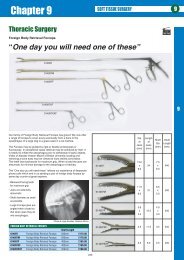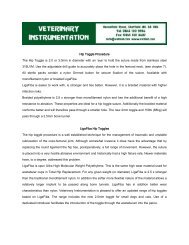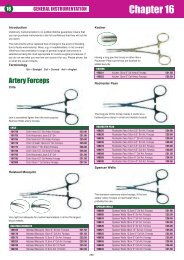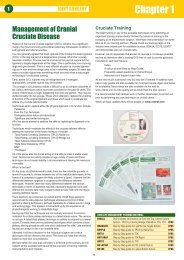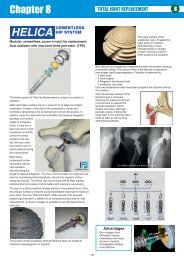Cardell MAX-12 HD - Veterinary Instrumentation
Cardell MAX-12 HD - Veterinary Instrumentation
Cardell MAX-12 HD - Veterinary Instrumentation
You also want an ePaper? Increase the reach of your titles
YUMPU automatically turns print PDFs into web optimized ePapers that Google loves.
<strong>Cardell</strong>® <strong>MAX</strong>-<strong>12</strong><strong>HD</strong> User’s Manualterm placement, a constant flush device (Intraflow®), IV tubing, 1L normalsaline, heparin, and pressure infuser device permits continuous flush infusionto prevent clot formation. General supplies such as elasticized and regular tape,suture, scrub solution, and assorted needles should be available. Localanesthesia (2% lidocaine HCl) may be injected in the vicinity of the artery toreduce vasospasm during the procedure.Catheter selection: Either short or long catheters may be successfully used fordirect blood pressure measurement. The preferred biomaterials for arterialcatheters are either PFE (Teflon®) or polyurethane. In most cases, short lengthcatheters (2-3”)are used in patients who require short term blood pressuremonitoring (i.e. anesthesia, short term procedures) or are relatively immobile.Long length indwelling catheters (4+”) are preferred for long term monitoringor in mobile patients. The gauge of catheter is based on vessel diameter at theplacement site. In dogs, 20-24 G x 2-3” over the needle catheters are used inthe dorsal pedal, metatarsal, and popliteal arteries. In cats, a 22-24G x 2”catheter is selected for the same arterial sites. Large diameter arterial segments(femoral and brachial a.) may accommodate a 20 G x 2-3” over the needlecatheter in the dog and a 22 G x 2-3” catheter in the cat. Several manufacturers(Arrow,BD) offer an over the needle catheter system with a built in guide wire that isintended to facilitate arterial catheter placement. In these systems, the guidewire is first advanced and the catheter is then placed over the guide wire. Thissystem is helpful when challenging cases are encountered. Long catheters aregenerally selected in large bore (femoral and brachial a.) arteries wherestabilization is challenging. The additional length of the catheter allows thecatheter tip to be located in a more central arterial location and adds additionallength that reduces accidental catheter dislodgment.Technique for setting up direct blood pressure monitoringEquipment set up and preparation: Prior to beginning the procedure, allequipment and supplies should be assembled and be ready to use. The first stepis to attach the pressure transducer to the patient monitor at the appropriateplug site. Following attachment, connect three way stopcocks to the lueradapters in the transducer housing. In permanent transducers, two stopcocksare required, in disposable units, only one may be necessary.Leave one stopcock “open” to room air and fill the chamber with heparinized<strong>12</strong>4 M1.0 5-15-09



